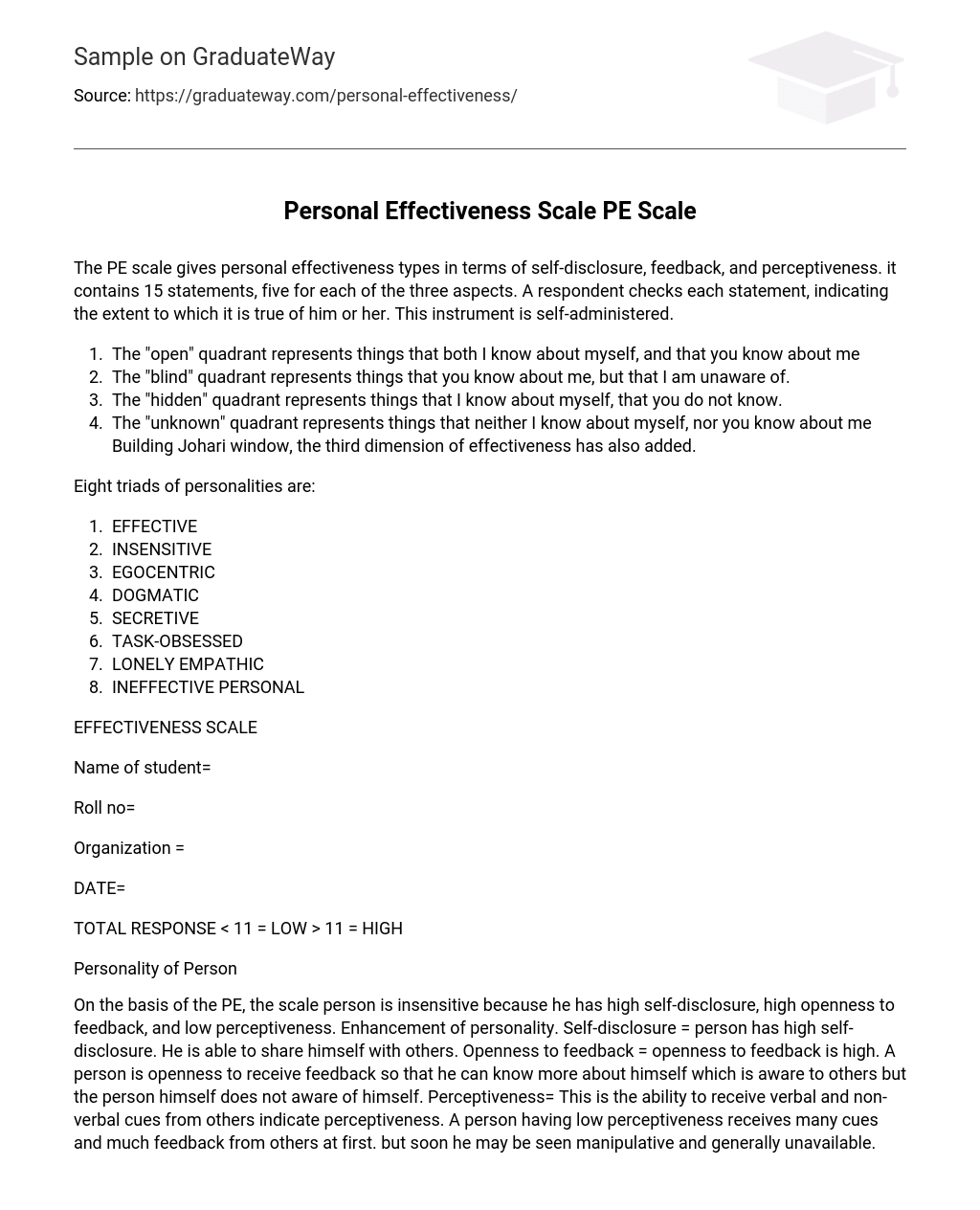The PE scale gives personal effectiveness types in terms of self-disclosure, feedback, and perceptiveness. it contains 15 statements, five for each of the three aspects. A respondent checks each statement, indicating the extent to which it is true of him or her. This instrument is self-administered.
- The “open” quadrant represents things that both I know about myself, and that you know about me
- The “blind” quadrant represents things that you know about me, but that I am unaware of.
- The “hidden” quadrant represents things that I know about myself, that you do not know.
- The “unknown” quadrant represents things that neither I know about myself, nor you know about me Building Johari window, the third dimension of effectiveness has also added.
Eight triads of personalities are:
- EFFECTIVE
- INSENSITIVE
- EGOCENTRIC
- DOGMATIC
- SECRETIVE
- TASK-OBSESSED
- LONELY EMPATHIC
- INEFFECTIVE PERSONAL
EFFECTIVENESS SCALE
Name of student=
Roll no=
Organization =
DATE=
TOTAL RESPONSE < 11 = LOW > 11 = HIGH
Personality of Person
On the basis of the PE, the scale person is insensitive because he has high self-disclosure, high openness to feedback, and low perceptiveness. Enhancement of personality. Self-disclosure = person has high self-disclosure. He is able to share himself with others. Openness to feedback = openness to feedback is high. A person is openness to receive feedback so that he can know more about himself which is aware to others but the person himself does not aware of himself. Perceptiveness= This is the ability to receive verbal and non- verbal cues from others indicate perceptiveness. A person having low perceptiveness receives many cues and much feedback from others at first. but soon he may be seen manipulative and generally unavailable.





